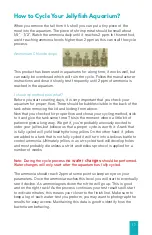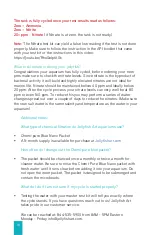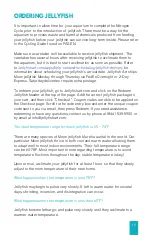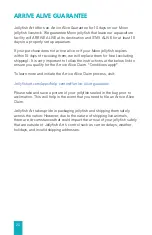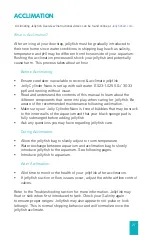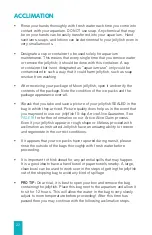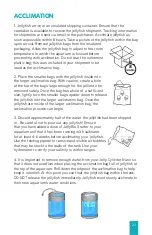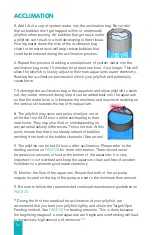
10
MIXING SALT WATER
Where can I purchase my Reverse Osmosis or Distilled water?
• Grocery stores
• Superstores such as Wal-Mart and Pharmacies
• If you are unsure about your source of water, contact us! We are happy
to help.
• Read the label!
Most labels will tell you how the water is filtered.
Why is salinity important?
• Because jellyfish are made up of 95% water, saltwater in their
environment should stay constant. Water is constantly moving through
the thin cell membranes of jellyfish because of a process called
osmosis. Therefore, it is important to stay within the salinity range to
avoid shock.
• Exposure to any type of extreme change in salinity rapidly will shock
your jellyfish and potentially cause harm. To avoid shock during water
changes, the new saltwater should be the same salinity as the current
aquarium water.
How do I mix my saltwater correctly?
• Use a clean, “aquarium-use” only 1-gallon water jug or 5-gallon bucket
as your mixing container to avoid introducing contaminants into your
water.
• Fill the container with the proper amount of Reverse Osmosis (RO)/
Distilled water.
• Add the salt (always add salt to water, not water to salt) and mix
thoroughly until all salt is dissolved.
• Allow time for the new saltwater to come to room temperature so as
to match the temperature of the tank water. It is best to let this sit
overnight in the same room as the aquarium and mixed periodically.
• Measure the salinity of the water with your hydrometer and adjust if
it is out of range. Be sure to flick or tap the hydrometer to remove any
bubbles from the reader arm as bubbles can give an inaccurate reading.
If you are having constant problems with salinity, consider investing in
a refractometer, which is an instrument used to measure salinity and
tends to be more accurate than a hydrometer.
• It is never a bad idea to have extra mixed saltwater on hand. Once
mixed, it can be stored as long as needed in a 5 gallon bucket with a lid.

















